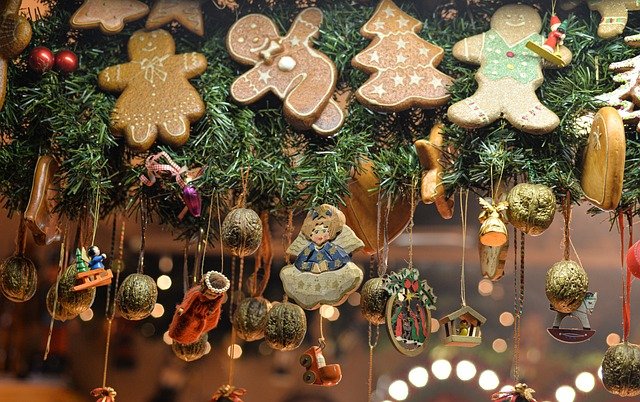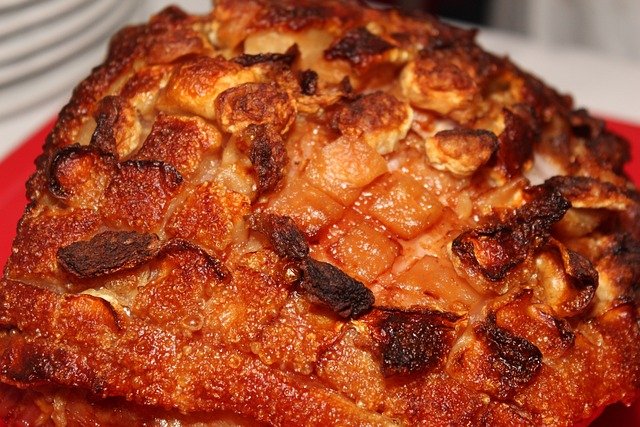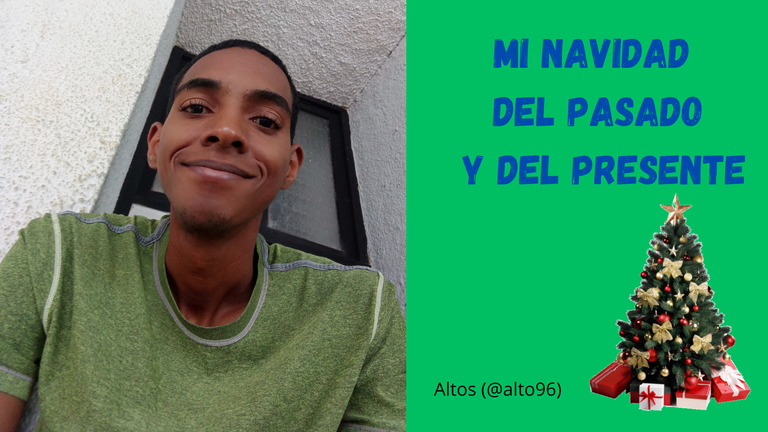Esta época del año es ansiada y disfrutada por millones alrededor del mundo. Una época llena de buenas vibras, alegría, dulces y amor hogareño. Cada país o cultura lo celebra de maneras diferentes, pero siempre con la base del amor y la calidez del hogar. En mi país (Cuba) no solemos llamarle "Navidad", le decimos "Fin de Año" y se celebra una gran fiesta con toda la familia en donde no faltan las tradiciones ni los platos típicos de esta fecha.
Greetings to all the Hivers of the hiveargentina community. I am motivated to participate in the initiative proposed here a few days ago and that has to do with the celebrations that we will have for this Christmas.
This time of the year is longed for and enjoyed by millions around the world. A time full of good vibes, joy, sweets and home love. Each country or culture celebrates it in different ways, but always with the basis of love and the warmth of home. In my country (Cuba) we don't usually call it "Christmas", we call it "New Year's Eve" and celebrate a big party with the whole family where there is no lack of traditions and typical dishes of this date.
---

Normalmente, se celebra el 31 de diciembre, pero algunas familias lo celebran desde el 30 de diciembre hasta el 2 de enero. En mi familia solíamos hacerlo así. Recuerdo que cuando era niño la familia se reunía cada día en una casa diferente, de esa manera todos los tíos tenían la oportunidad de recibir en sus casas a toda la familia. Era maravilloso.
Ahora los tiempos han cambiado y con la economía vigente en mi país se vuelve demasiado difícil hacerlo así. Así que desde hace unos años lo celebramos en casa con los familiares más allegados. La mañana del 31 de diciembre suele ser el momento más atareado del día. Los adultos solemos levantarnos desde las 5 o 6 de la mañana para prepararlo todo, y a veces hasta más temprano.
Lo primero que se suele hacer es poner a hervir agua (mucha agua) para limpiar la piel del cerdo (sí, porque solemos sacrificar al animal ese mismo día). Esto forma parte de una tradición muy cubana en esta fecha: la tradición de asar el cerdo en púa. Una tradición que (debido a la crisis económica) tristemente se está perdiendo, pues lógicamente es un gasto que no todos se pueden costear. Pero quedémonos con la parte buena. Mientras se pone el agua a hervir, se van cortando especias, preparando aliños y condimentos.
Una vez sacrificado al animal, se le extraen las tripas y la sangre para preparar lo que Cuba se conoce como morcilla, un plato delicioso que nunca falta. Una vez limpio, se le llena el interior de la panza con los aliños y especias preparados previamente, se cose y ya está listo para montar en la púa. Todo esto se realiza bien temprano, porque dependiendo del tamaño del animal, más tardará el asado. Una vez colocado el animal en el fuego, una persona debe quedarse y mover la púa lentamente para que el asado sea parejo.
Normally, it is celebrated on December 31, but some families celebrate it from December 30 to January 2. In my family we used to do it that way. I remember when I was a kid the family would gather every day in a different house, that way all the uncles had the opportunity to receive the whole family in their homes. It was wonderful.
Now times have changed and with the current economy in my country it becomes too difficult to do it that way. So for the last few years we have been celebrating at home with the closest family members. The morning of December 31 is usually the busiest time of the day. We adults usually get up at 5 or 6 in the morning to prepare everything, and sometimes even earlier.
The first thing that is usually done is to boil water (a lot of water) to clean the skin of the pig (yes, because we usually sacrifice the animal that same day). This is part of a very Cuban tradition on this date: the tradition of roasting the pig on a spike. A tradition that (due to the economic crisis) is sadly being lost, because logically it is an expense that not everyone can afford. But let's keep the good part. While the water is put to boil, spices are cut and seasonings and condiments are prepared.
Once the animal is slaughtered, the guts and blood are extracted to prepare what Cuba is known as morcilla, a delicious dish that is never lacking. Once cleaned, the inside of the belly is filled with the previously prepared seasonings and spices, it is sewn and ready to be mounted on the spike. All this is done very early, because depending on the size of the animal, the roast will take longer. Once the animal is placed in the fire, one person must stay and move the spike slowly so that the roast is even.
---

Normalmente, nos turnamos para realizar esta labor. Y entre música y bebidas preparamos todo lo demás. Los niños juegan mientras que los adultos limpiamos la casa, preparamos las ensaladas, hervimos las viandas, cocinamos el arroz y todo lo demás para la cena de la noche. Así transcurre el día, algo agotador pero feliz. A la noche, ya cocinado el cerdo, se baja de la púa y solemos siempre poner unas hojas de plátano sobre una mesa para colocar allí el animal. Las hojas son para que la grasa no se pegue a la mesa. Luego se saca la carne y el cuerito del cerdo para servirlo en bowl en la mesa. Se prepara la mesa con todos los comestibles y bebidas.
Normally, we take turns doing this work. And between music and drinks we prepare everything else. The children play while the adults clean the house, prepare the salads, boil the food, cook the rice and everything else for the evening meal. The day goes by in this way, somewhat tiring but happy. At night, once the pig is cooked, it is taken down from the tine and we always put some banana leaves on a table to place the animal there. The leaves are so that the fat does not stick to the table. Then the meat and the pig's horn are removed to serve it in a bowl on the table. The table is prepared with all the food and drinks.
---

A la hora de comer se disfruta de este divino manjar. Siempre suele acompañarse la carne de cerdo asado con arroz congris (o moros con cristianos, como también se conoce), tamales y ensaladas. Pero esto puede variar a gusto personal. Luego de la cena bailamos, reímos, cantamos; en fin celebramos esperando a que den las 12 AM. A media noche se realiza un brindis por el año nuevo, manifestamos todo lo que queremos para ese año que comienza y nos decimos "Feliz año nuevo".
En cuanto a las decoraciones, en Cuba ya estamos montando el árbol de Navidad y demás adornos desde mediados de noviembre hasta el 6 de enero. Y así suele ser un Fin de Año en Cuba. Perdonen que no usé fotos de mis fiestas en casa, pero desgraciadamente tuve perdida de varios documentos hace tiempo atrás.
When it is time to eat, this divine delicacy is enjoyed. The roast pork is always accompanied by rice congris (or moros con cristianos, as it is also known), tamales and salads. But this can vary according to personal taste. After dinner we dance, laugh, sing; in short we celebrate waiting for 12 AM. At midnight we make a toast to the new year, we say all we want for the new year and we say "Happy New Year".
As for decorations, in Cuba we are already setting up the Christmas tree and other decorations from mid-November until January 6. And that's how New Year's Eve usually goes in Cuba. Sorry I didn't use pictures of my home parties, but unfortunately I lost some documents some time ago.
Foto de la portada original del autor y editada en Canva
Texto traducido en DeepL
Texto corregido con ayuda de Language tool
Banner creados en Canva con recursos gratis de la app
Original cover photo by the author and edited in Canva.
Text translated in DeepL
Text corrected with the help of Language tool
Banner created in Canva with free resources from the app
Posted Using InLeo Alpha


Este post ha sido curado por el equipo Hive Argentina | Participa en nuestro Trail de curación.
Congratulations @alto96! You have completed the following achievement on the Hive blockchain And have been rewarded with New badge(s)
Your next payout target is 500 HP.
The unit is Hive Power equivalent because post and comment rewards can be split into HP and HBD
You can view your badges on your board and compare yourself to others in the Ranking
If you no longer want to receive notifications, reply to this comment with the word
STOPOh thanks pal. 😊
That's great @alto96! We're impressed with your progress on Hive! Keep going and reach your new target!
BTW, we noticed we miss your support for our proposal. Mays we ask you to check it out and consider supporting it?
Thank you!
Sure
Hola amigo @alto96, muchas gracias por tu participación en nuestra iniciativa. Sabes que el cerdo es un tremendo platillo para estas celebraciones. Yo soy mucho de comer chicharrón. La verdad es que sería genial que nuevamente en Cuba, se pudieran retomar todas sus tradiciones como debe ser. Ruego a Dios, que más temprano que tarde, lo veas cristalizado. Saludos y gracias por participar, en esta tu comunidad también.😍
Gracias por aceptarme acá. Yo también soy fanático del chicharrón, sobre todo si es de cerdo joven y tierno, y si es acompañado de unos tamalitos, mejor todavía.
Ah, bueno los tamalitos sí que no los conozco, pero seguro es delicioso. Saludos, amigo.
Son muy parecidos a unos de los platos presentados en el post donde se lanzó la iniciativa
Lástima que se pierdan tradiciones por la economía, aunque me imagino muchos harán un gran esfuerzo para seguirla y pasarla a las siguientes generaciones.
En casa también era mucho trabajo desde el inicio, pero eso se disfrutaba mucho entre música, risas y baile. Ya a las 5 pm empezábamos a turnarnos en la ducha para irnos arreglando para la noche.
Ahora ya no lo celebro así, pues al emigrar estoy solo con mis hijos, pero trato de que estas fechas sean lindas para ellos.
Deja un sentimiento nostálgico. Un agridulce sabor de boca pero es lindo mantener vivas las tradiciones aunque muten. No se puede dejar morir esa identidad que nos representa
Realmente los tiempos cambian y a veces, me hacen dudar, si todo pasado fue mejor. Pero en líneas generales, siempre llego a la conclusión, de que recordamos casi siempre lo bonito de las historias y está bien que eso suceda. Me pasa lo mismo y el ritual de tu familia, no dista mucho de la mía, cuando vivíamos en el campo y tengo lo mejores recuerdos de esos tiempos.Tarde, pero seguro estimado amigo @alto96.
Gracias, por traer tus vivencias y reflexiones, en el feed de la comunidad.
Saludos y felicidades
Nunca es tarde si la dicha es buena. Agradezco como siempre sus palabras querido amigo. Las mejores navidades para mí son las que se celebran en el campo. Y claro, recordar bellos momentos, son la base del futuro que queremos .
Muchas felicidades para usted y su familia .
Gracias e igualmente estimado autor.
Felicidades